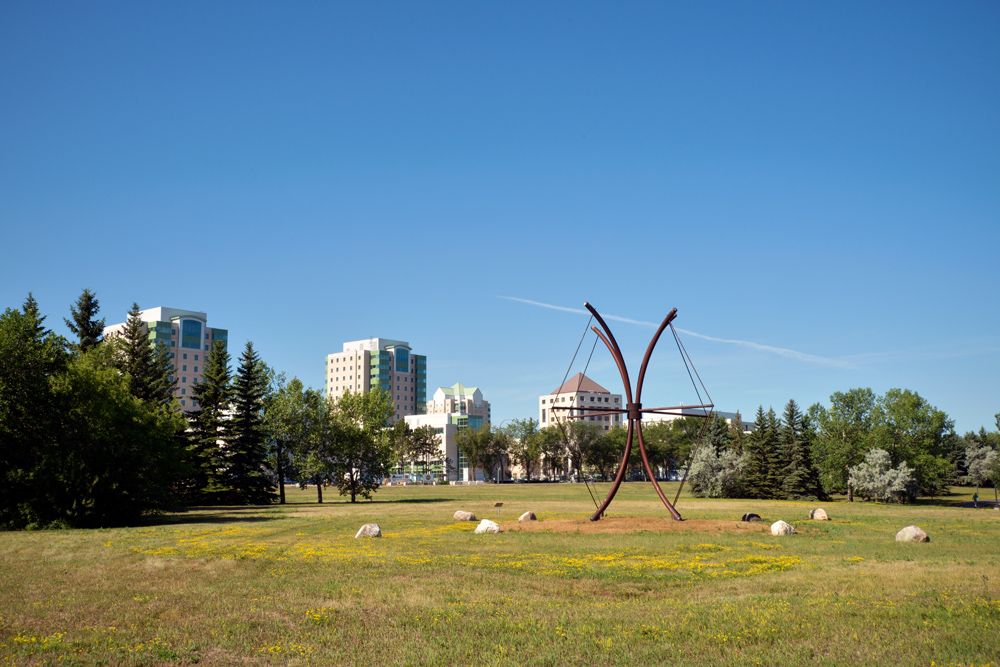Located north of University Drive North, next to Wascana Lake

© Lionel Peyachew. Reproduced with the permission of the artist. Photograph by the University of Regina.
The Four Directions, 2005
Steel pipe, cables and boulders
University of Regina President’s Art Collection; pc.2014.23
Lionel Peyachew is a Cree artist from the Red Pheasant First Nation in Saskatchewan. He completed a Bachelor of Fine Arts from the University of Lethbridge in 1998, and a master’s degree at the University of Calgary in 2000. He is currently an assistant professor at the First Nations University of Canada.
In The Four Directions, four large bound bows are poised outward with their arrows pointing toward the four quadrants of the universe. A sacred number, four represents the four seasons, the four elements, the four kingdoms, the four medicines and the four parts of a person. The sculpture, the First Nations University and the University or Regina are also located on Treaty 4 land.
Peyachew references the traditional use of the Medicine Wheel’s four directions by elders as a philosophical and teaching tool. Indigenous cultures look to the Medicine Wheel as a symbol of the interconnectedness between all living things and the environment, and life’s circular journey. To function well individually and as a community, all four parts must exist in balance.
Where the sun rises in the East, the Medicine Wheel represents a person’s infant years and the spiritual. To the South, childhood, intellectual growth and emotion are symbolised. Continuing the journey into the West quadrant, adulthood and introspection and the physical realm are located, with old age and wisdom completing the Wheel in the North.
Here, the bow and arrow are symbolic of the history of survival of the Plains First People. In the context of this site, The Four Directions pays homage to Indigenous teachings and reflects the importance of education as a tool to thrive, embodying the University of Regina’s philosophy of integrating traditional values with education.
This sculpture was realised by the University of Regina and the First Nations University of Canada, in collaboration with the City of Regina, with the financial support of the Government of Canada through the Cultural Capitals of Canada, a program of the Department of Canadian Heritage. Additional support was provided by SaskCulture Centennial Project Fund, Saskatchewan Department of Culture, Youth and Recreation Community Initiative Fund, The University of Regina Alumni Association and Knowhere Productions Inc.


